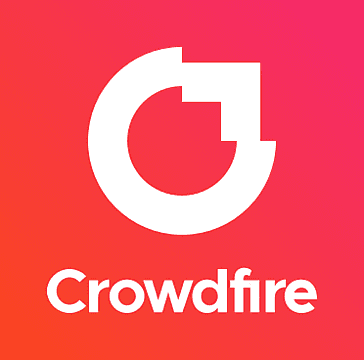In the bustling world of social media, finding the right management tool isn’t just a luxury; it’s a necessity. With so many options at your fingertips, it can be overwhelming to choose the one that fits like a glove. Today, we’re slicing through the noise to compare two giants in the arena: Tailwind and Crowdfire. Whether you’re a savvy marketer, a small business owner, or a content creator looking to amplify your online presence, this guide is tailored for you. We’re keeping it simple, actionable, and, most importantly, real. No fluff, no jargon—just straight talk to help you decide the best social media management tool for your arsenal.
| TailWind | CrowdFire |
|---|---|
 |  |
| G2 Score – 4.3 out of 5 stars | G2 Score – 4.0 out of 5 stars |
| TrustRadius Score – 6.8 out of 10 stars | TrustRadius Score – 8.4 out of 10 stars |
Tailwind vs Crowdfire: Ease of Use and Interface
One of the first things you’ll notice when diving into a new tool is its interface. Is it inviting? Can you navigate through it without pulling your hair out? Let’s see how Tailwind and Crowdfire stack up in terms of ease of use and user interface.
Tailwind prides itself on a sleek, intuitive interface designed specifically for Pinterest and Instagram enthusiasts. From the get-go, Tailwind feels like a cozy nook where everything is within reach. Setting up your account is a breeze, and you’re not bombarded with too many options at once. Tailwind’s dashboard is streamlined, focusing on your scheduled posts, analytics, and additional features like Tailwind Create and Communities, which are easy to find and use. Tailwind Create, for example, is a game-changer for those who want to design eye-catching posts without spending hours on it. The tool guides you through the creation process with simple steps, making it perfect for both beginners and seasoned marketers who value their time.
On the flip side, Crowdfire offers a robust platform that goes beyond Instagram and Pinterest, supporting a wider range of social networks including Twitter, Facebook, LinkedIn, and even YouTube. Crowdfire’s interface is clean and user-friendly, but it packs a lot more features, which can be a bit overwhelming for first-time users. The dashboard is comprehensive, giving you a quick overview of your scheduled content, content curation, and analytics. Crowdfire excels in content discovery and curation, allowing you to easily find and share content relevant to your audience. This can be a huge time-saver, especially if you manage multiple accounts across different platforms. However, the wealth of features and options might require a slight learning curve compared to Tailwind’s more focused approach.
The Bottom Line on Ease of Use and Interface
When it comes to ease of use and interface, the choice between Tailwind and Crowdfire boils down to your specific needs and comfort level with social media tools.
- If you’re looking for a tool that’s easy to navigate, with a focused feature set for Instagram and Pinterest, and you value design and scheduling capabilities, Tailwind is your go-to. Its user-friendly interface and streamlined workflow make it ideal for those who want to focus on creativity and efficiency without the complexity.
- If, however, you’re managing a broader social media presence across multiple platforms and need a tool that excels in content curation and discovery, Crowdfire might be more up your alley. Its interface is straightforward enough, but be prepared to spend some time exploring all its features to fully leverage its power.
In the end, both Tailwind and Crowdfire offer compelling features designed to make your social media management smoother and more effective. The best choice for you depends on where your priorities lie: in streamlined design and scheduling or in comprehensive content curation across multiple platforms.
Tailwind vs Crowdfire: Analytics and Reporting
In the digital age, data is king. Having a clear understanding of your social media performance can significantly influence your strategy, helping you to adjust and optimize your efforts for better engagement and growth. Here’s how Tailwind and Crowdfire measure up in terms of providing you with the insights you need.
Tailwind’s Analytics and Reporting
Tailwind’s analytics are designed with visual content creators in mind, offering deep insights for Pinterest and Instagram users. It provides detailed reports on post performance, audience engagement, and growth metrics. What makes Tailwind stand out is its ability to offer actionable insights. For instance, its Pinterest analytics include board insights and pin performance, helping you to understand what content resonates most with your audience. Similarly, Instagram analytics from Tailwind offer hashtag suggestions and engagement rates, allowing you to refine your strategy with precision.
Moreover, Tailwind’s analytics are visually appealing, making it easier to digest complex data. You can track your follower growth, engagement trends, and more through easy-to-understand graphs and charts. This not only helps in making informed decisions but also in reporting to stakeholders or clients with clarity and confidence.
Crowdfire’s Analytics and Reporting
Crowdfire, on the other hand, takes a broader approach to analytics, catering to a wider array of social platforms including Twitter, Facebook, LinkedIn, and Instagram. It provides a comprehensive overview of your social media health, with metrics that include post engagement, optimal posting times, and follower growth. One of the strengths of Crowdfire’s analytics is its cross-platform reporting capability, which is incredibly useful for marketers managing a presence across multiple social networks.
Crowdfire’s reports are straightforward and focus on the essentials, making it easy for users to get a quick snapshot of their performance. Additionally, Crowdfire offers the ability to customize reports, which is a plus for users who need to report specific metrics to clients or team members. The tool also provides insights into content performance, suggesting the types of content that are likely to generate more engagement based on your historical data.
The Bottom Line on Analytics and Reporting
Choosing between Tailwind and Crowdfire for analytics and reporting depends on where your content focus lies and the breadth of your social media strategy.
- For Visual Content Creators: Tailwind is the superior choice if your primary platforms are Pinterest and Instagram. Its detailed, actionable analytics tailored to these platforms can help you fine-tune your visual content strategy for maximum engagement and growth.
- For Multi-Platform Marketers: If your strategy spans multiple social media platforms and you need a tool that offers a comprehensive overview of your performance across them, Crowdfire’s analytics provide the breadth and flexibility you need. Its ability to customize reports makes it a valuable tool for marketers who need to track a wide range of metrics.
Both Tailwind and Crowdfire offer powerful analytics capabilities, but the right tool for you depends on your specific needs—whether you’re looking for depth and detail for specific platforms or a broad overview across several networks.
Tailwind vs Crowdfire: Content Discovery and Curation
A significant part of maintaining an engaging and active social media presence involves consistently posting content that resonates with your audience. Both Tailwind and Crowdfire offer features aimed at simplifying the process of content discovery and curation. Let’s delve into how each platform approaches this task and which might be more suited to your needs.
Tailwind’s Content Discovery and Curation
Tailwind’s approach to content discovery is highly focused on visual platforms, specifically Pinterest and Instagram. For Pinterest, Tailwind offers features like Tribes (now called Communities), which allow users to join groups within their niche for content sharing and discovery. This not only facilitates finding high-quality, relevant content to pin but also increases your content’s visibility among like-minded creators.
For Instagram, Tailwind doesn’t have a direct content discovery feature, but it aids in curation through smart recommendations for hashtags and optimal posting times, indirectly supporting the content curation process by ensuring your posts reach the right audience at the right time. Moreover, Tailwind Create stands out by offering users the ability to quickly generate customizable posts that fit their brand, making the content creation process both efficient and aligned with their visual strategy.
Crowdfire’s Content Discovery and Curation
Crowdfire takes a broader approach to content discovery and curation, supporting a wide array of platforms including Twitter, Facebook, Instagram, LinkedIn, and Pinterest. Its content curation features are robust, offering a “Curated Content” section where users can discover trending articles, images, and posts from across the web, based on their selected topics of interest. This feature makes it incredibly easy to find and schedule engaging content that’s likely to resonate with your audience.
Furthermore, Crowdfire’s “RSS Feed” feature allows users to connect their favorite blogs or websites directly to their Crowdfire account. This means anytime new content is published on those sites, it can be quickly shared with your social media followers, keeping your feed active and informative with minimal effort.
The Bottom Line on Content Discovery and Curation
When it comes to choosing between Tailwind and Crowdfire for content discovery and curation, your decision should hinge on your primary platforms and how much of your strategy is focused on content sharing versus original content creation.
- For Pinterest and Instagram Creators: Tailwind is the more tailored choice, especially with features like Tailwind Communities for Pinterest and Tailwind Create for Instagram, which support niche content discovery and streamlined content creation.
- For Multi-Platform Social Media Managers: Crowdfire shines with its ability to curate and share content across a broader range of social media platforms. Its curated content feature and RSS feed integration make it a powerhouse for keeping your feeds filled with fresh, relevant content without extensive manual searching.
In essence, Tailwind offers niche, platform-specific tools that cater to visual content creators looking for community engagement and brand consistency. Crowdfire, with its wide-ranging content discovery and sharing capabilities, is ideal for those managing multiple social media channels who need to maintain an active presence with a mix of curated and original content.

Related: Check out our free SEO suite

Tailwind vs Crowdfire: Pricing and Plans
Understanding the cost and what you get for your investment is crucial when choosing a social media management tool. Let’s break down the pricing structures of Tailwind and Crowdfire to see which might offer the best value for your needs.
Tailwind Pricing
Tailwind offers different pricing tiers for Pinterest and Instagram, with plans designed to accommodate the needs of solo creators up to larger businesses. Each platform-specific plan includes a Free trial with limited features, allowing users to test the waters before committing.
- Plus Plan: Tailwind’s entry-level paid plan, suitable for small businesses or solo creators, offers comprehensive scheduling tools, analytics, and basic features of Tailwind Create and Communities. The pricing for this plan is typically set per account, per month, with discounts available for annual commitments.
- Professional Plan: Aimed at growing businesses with more extensive needs, this plan includes advanced analytics, more posts per month, and additional collaboration tools. Pricing reflects the added capabilities.
- Advanced and Max Plans: These higher-tier plans are tailored for large businesses and agencies needing extensive features, including more accounts and custom solutions.
Tailwind’s pricing is transparent, with no hidden fees, and provides flexibility with monthly or annual billing options.
Crowdfire Pricing
Crowdfire also offers a tiered pricing model that caters to individuals and businesses of various sizes, including a Free plan with basic features suitable for those just getting started.
- Free Plan: Offers limited scheduling capabilities and content curation for a small number of accounts. It’s a good starting point for beginners to social media management.
- Plus Plan: This plan is a step up, allowing for more posts per month and additional social accounts. It’s designed for solo preneurs or small businesses looking to expand their social media presence.
- Premium and VIP Plans: These plans are geared towards more significant businesses and agencies, offering the ability to manage a larger number of accounts and providing more advanced features, including competitor analysis and custom reporting.
Crowdfire’s plans are competitively priced, and like Tailwind, they offer the choice between monthly and annual billing, with savings available for those who commit to an annual plan.
The Bottom Line on Pricing and Plans
The decision between Tailwind and Crowdfire in terms of pricing and plans will largely depend on:
- Your Specific Needs: Consider the platforms you use most and the features you need. Tailwind is more tailored to Pinterest and Instagram, while Crowdfire offers broader platform support.
- Your Budget: Both tools offer a range of pricing tiers, so consider what you’re willing to spend and what you’re getting in return. The value of the tool should align with your social media goals and the size of your operation.
- Growth Potential: Think about not just your current needs but also your future growth. Choosing a tool that can scale with your business is crucial to avoid the hassle of switching tools down the line.
Both Tailwind and Crowdfire offer value in their respective domains, with Tailwind focusing on visual content creators and Crowdfire catering to a broader audience with its extensive content curation and cross-platform support.
Conclusion
Tailwind shines for those deeply invested in Pinterest and Instagram, offering tailored features like Tailwind Create and Communities that enhance visual content creation and foster niche community engagement. Its user-friendly interface and detailed analytics make it an excellent choice for creators and businesses looking to elevate their presence on these platforms specifically.
Crowdfire, on the other hand, stands out for its versatility and broad platform support, including Twitter, Facebook, LinkedIn, and more. Its robust content curation and scheduling features simplify managing a diverse social media strategy, making it ideal for those juggling multiple accounts or seeking to expand their digital footprint across various networks.






















Comments are closed.